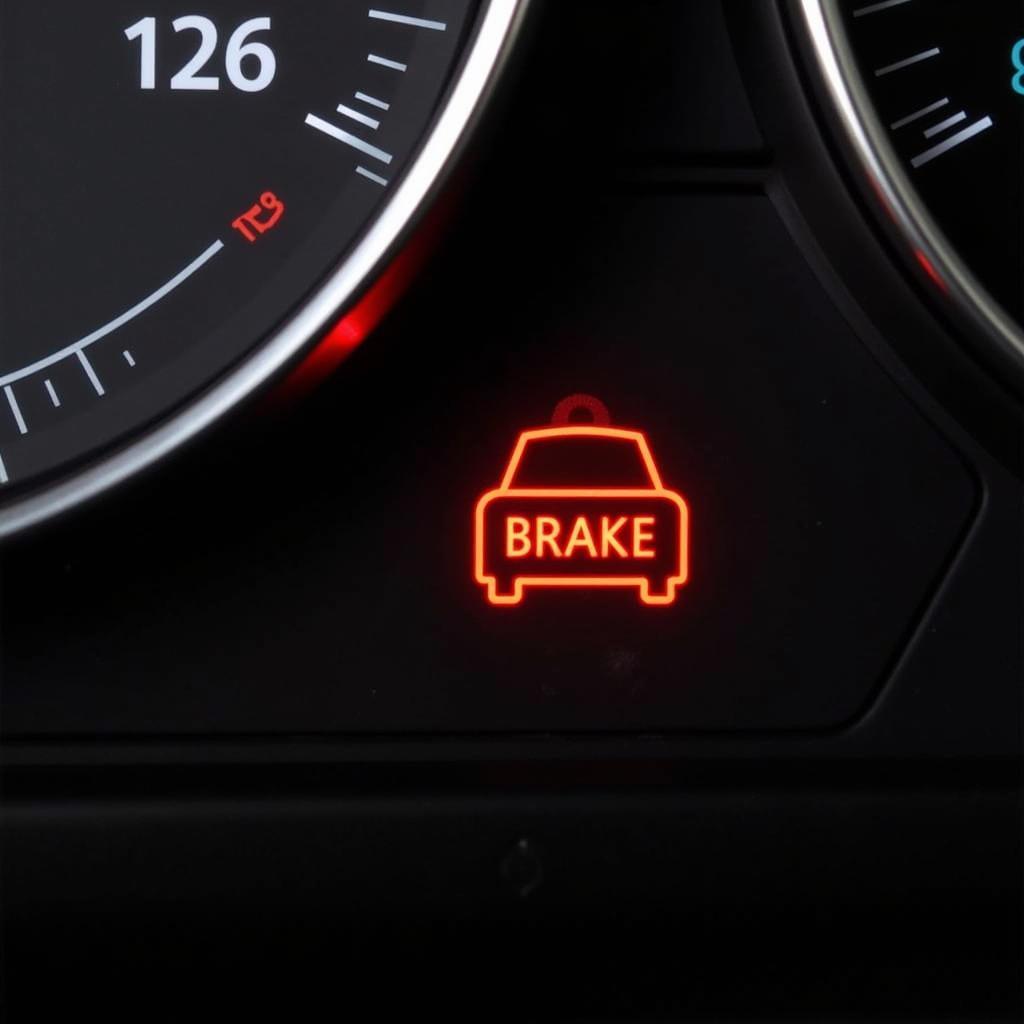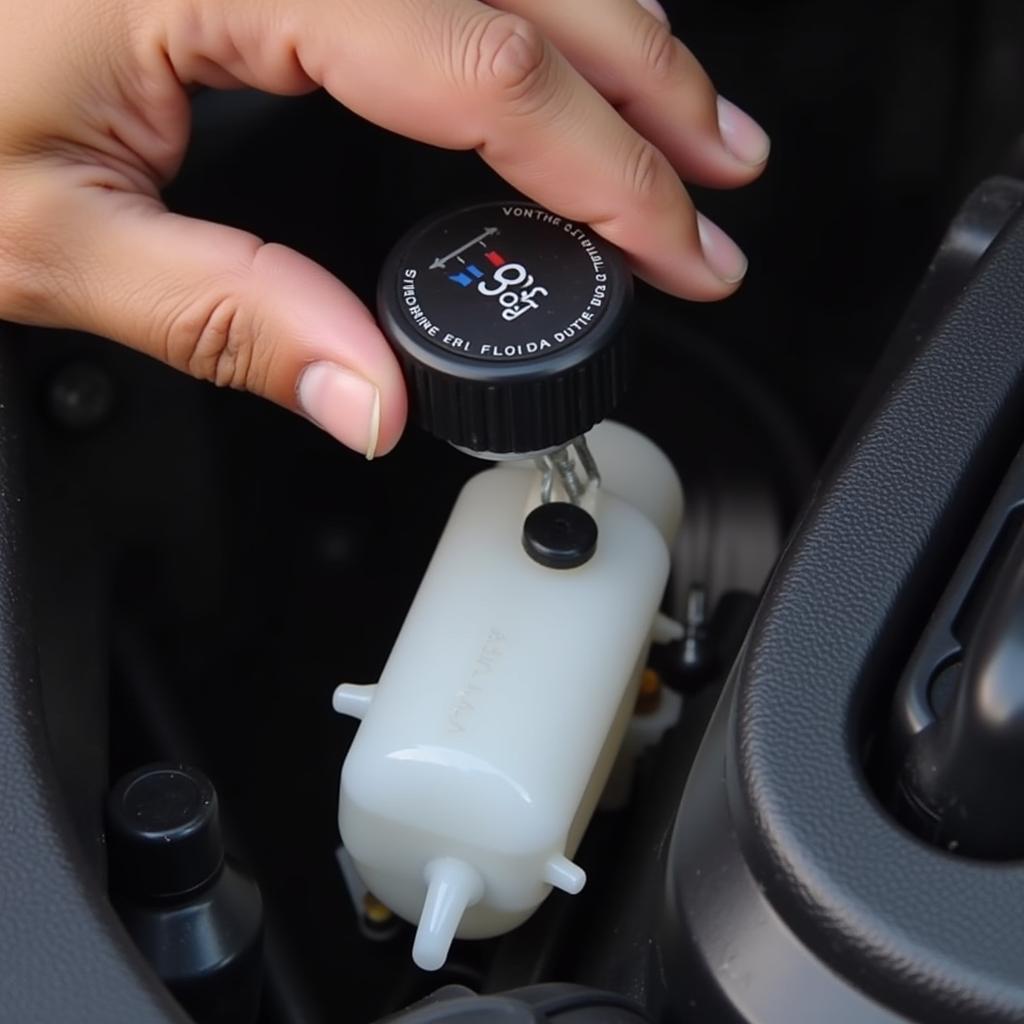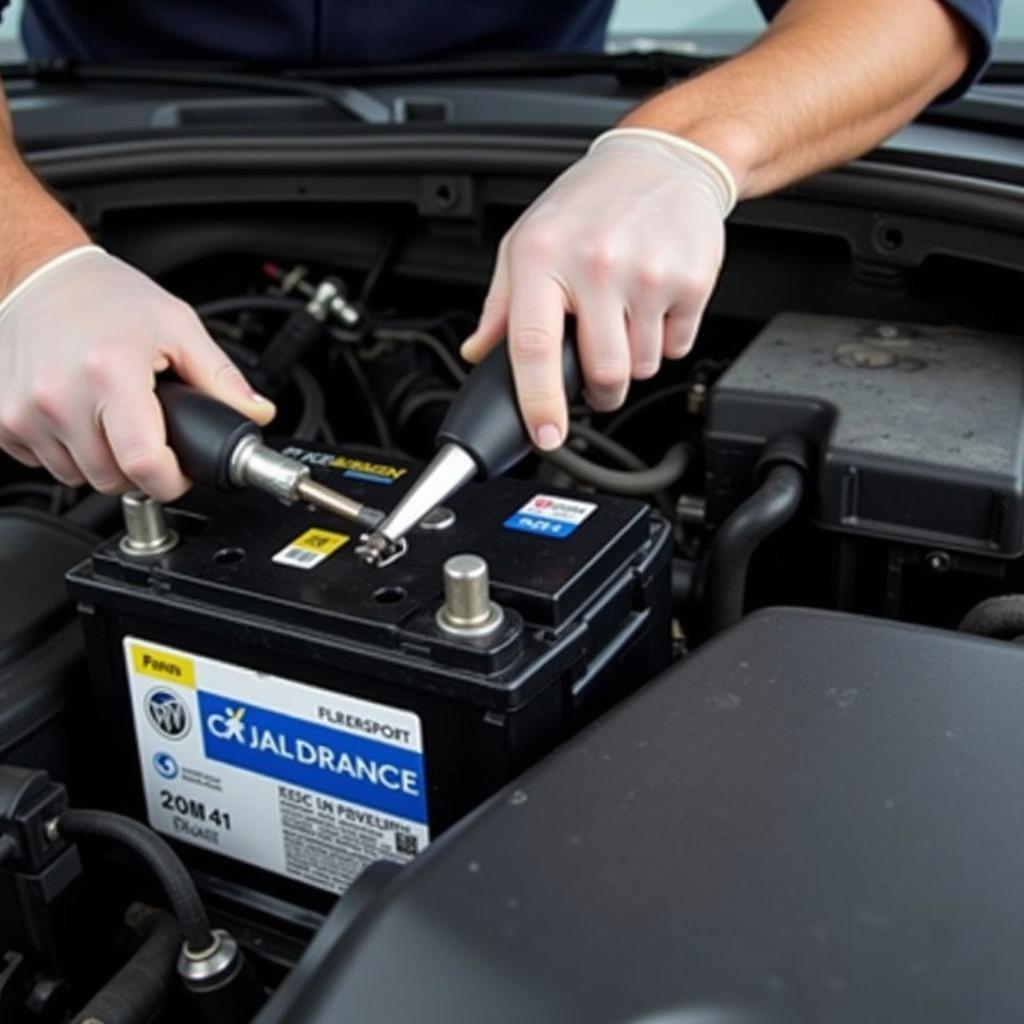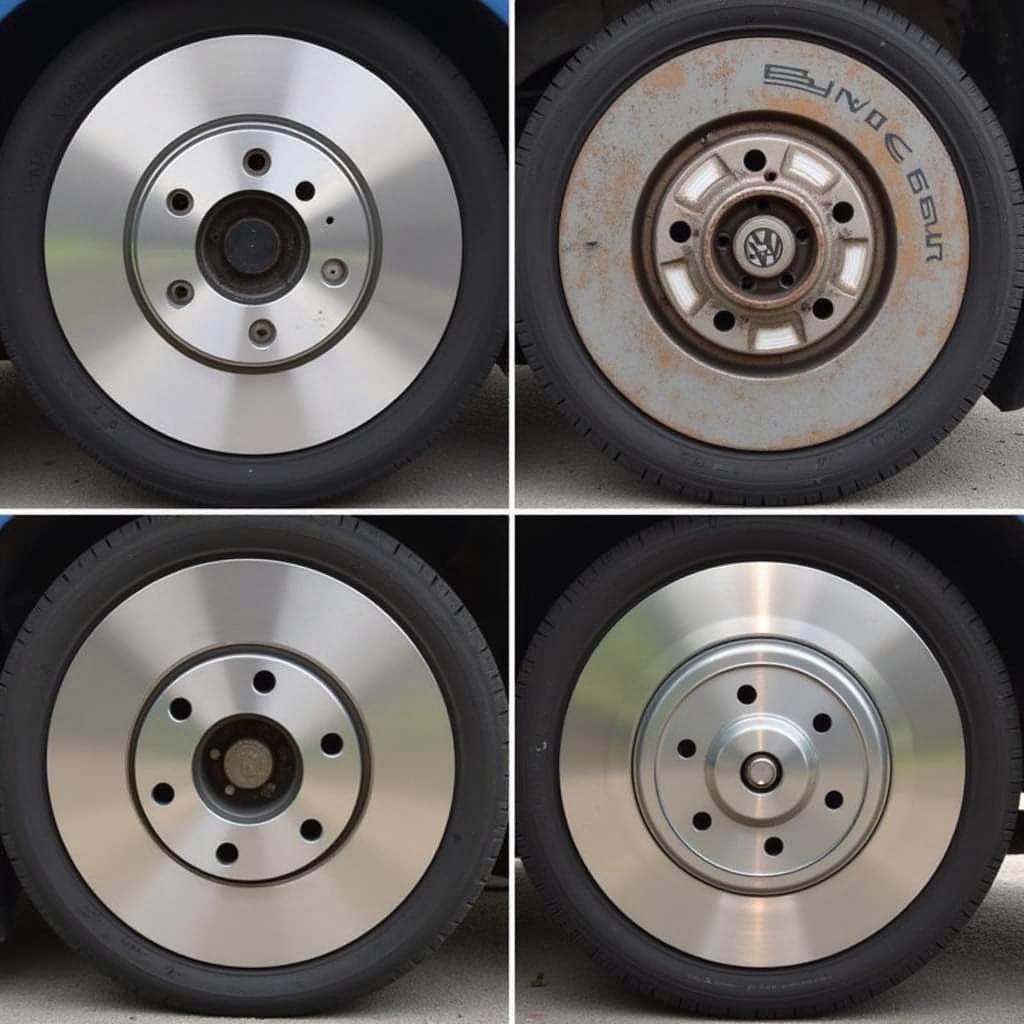The dreaded mini cooper brake system warning light can be a source of anxiety for any driver. Understanding what triggers this warning and how to address it is crucial for maintaining your Mini’s safety and performance. This comprehensive guide will walk you through the common causes, diagnostic procedures, and potential solutions for a mini cooper brake system warning, empowering you to take control and get back on the road with confidence.
If your Mini Cooper displays a brake system warning, it’s essential to address it promptly. Ignoring the warning could lead to more significant and costly repairs down the line. You might even find helpful information on the brake system warning light mini cooper to get a head start on understanding the issue.
Understanding Your Mini Cooper’s Brake System Warning
The brake system warning light in your Mini Cooper can illuminate for various reasons, from minor issues like low brake fluid to more severe problems like failing brake components. Accurate diagnosis is key to determining the root cause.
Common Causes of a Mini Cooper Brake System Warning
- Low Brake Fluid: This is the most frequent culprit. As brake pads wear down, the brake fluid level naturally drops. A leak in the brake lines can also cause a rapid drop in fluid level, demanding immediate attention.
- Worn Brake Pads: Brake pads have wear indicators that trigger the warning light when they reach a critical thickness. Replacing the brake pads usually resolves this issue.
- Faulty Brake Sensor: Sometimes, the brake pad wear sensor itself can malfunction, triggering the warning light even with sufficient pad thickness.
- ABS Issues: While less common, a problem with the Anti-lock Braking System (ABS) can also trigger the brake system warning light. This usually requires specialized diagnostic equipment.
- Parking Brake Engaged: While seemingly obvious, a partially engaged parking brake can also illuminate the warning light.
You can learn more about specific warning light situations by visiting resources like mini brake pad warning or researching particular model years like the 2005 mini cooper brake pad warning light.
 Mini Cooper Brake Warning Light on Dashboard
Mini Cooper Brake Warning Light on Dashboard
Diagnosing the Problem
Before panicking, take a deep breath and follow these diagnostic steps:
- Check the Parking Brake: Ensure the parking brake is fully disengaged.
- Inspect Brake Fluid Level: Locate the brake fluid reservoir and check the fluid level. If it’s low, top it off with the correct brake fluid type specified in your owner’s manual.
- Visually Inspect Brake Pads: If possible, check the thickness of your brake pads through the wheel spokes. If they appear thin, replacement is likely necessary.
- Consult a Professional: If the problem persists after these checks, it’s best to consult a qualified mechanic with experience in Mini Coopers. They can use diagnostic tools to pinpoint the exact issue.
For specific scenarios like a yellow brake warning light mini cooper, dedicated resources offer targeted advice.
 Checking Mini Cooper Brake Fluid Reservoir
Checking Mini Cooper Brake Fluid Reservoir
Addressing the Mini Cooper Brake System Warning
Once you’ve diagnosed the problem, here are the common solutions:
- Adding Brake Fluid: If low fluid is the culprit, top it off and monitor the level. A continuously dropping level indicates a leak that needs immediate professional attention.
- Replacing Brake Pads: Worn brake pads require replacement. It’s recommended to replace both the front and rear pads simultaneously, even if only one set is worn. For those experiencing a mini rear brake pads warning light, specific guides are available to assist you.
- Repairing or Replacing Brake Components: Issues with the ABS system or other brake components typically require professional repair or replacement.
“Regular brake system maintenance is crucial for preventing major issues,” advises John Smith, ASE Certified Master Technician at Smith Automotive. “Addressing warning lights promptly can save you time, money, and ensure your safety on the road.”
Conclusion
The mini cooper brake system warning shouldn’t be ignored. By understanding the common causes, following diagnostic steps, and seeking professional help when needed, you can maintain a safe and reliable braking system in your Mini Cooper. Addressing the warning promptly ensures optimal performance and prevents potentially dangerous situations. Don’t hesitate to learn more from resources like yellow brake warning light mini cooper to get more specific information related to your situation.
FAQ
- What should I do if my mini cooper brake system warning light comes on? Pull over safely, check your parking brake, and inspect your brake fluid level. If the issue persists, consult a professional.
- How often should I check my brake fluid level? It’s a good practice to check your brake fluid level at least once a month.
- Can I drive my Mini Cooper with the brake warning light on? It’s not recommended. Driving with the brake warning light on could be dangerous.
- How much does it cost to fix a mini cooper brake system warning? The cost depends on the underlying issue, ranging from a simple fluid top-off to more expensive component replacements.
- What is the difference between a red and yellow brake warning light? A red light indicates a serious issue requiring immediate attention, while a yellow light often signals a less critical problem, such as worn brake pads.
- How can I prevent my mini cooper brake system warning light from coming on? Regular brake system maintenance, including fluid checks and timely pad replacements, can prevent many warning light situations.
- Are there any specific resources for understanding brake warnings in older Mini Coopers? Yes, you can find information tailored to specific model years, such as the 2005 mini cooper brake pad warning light.



